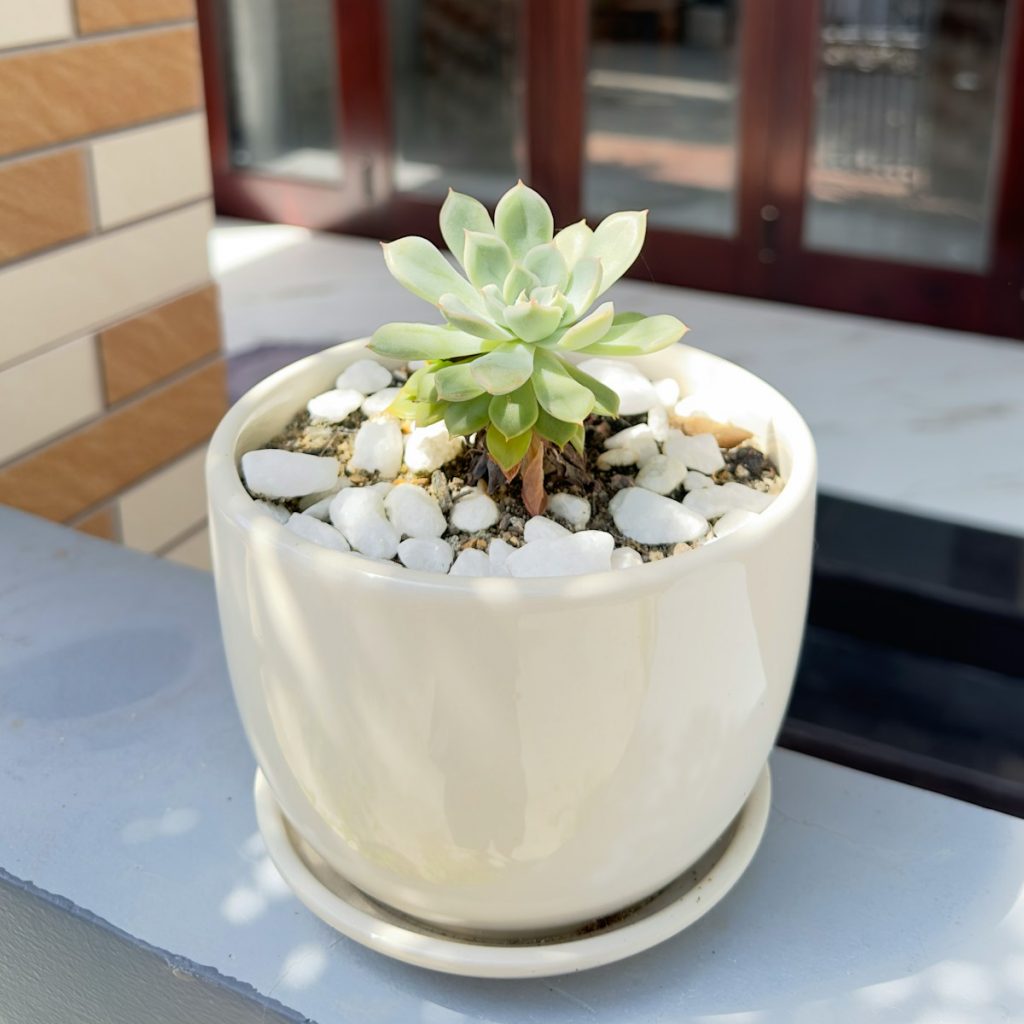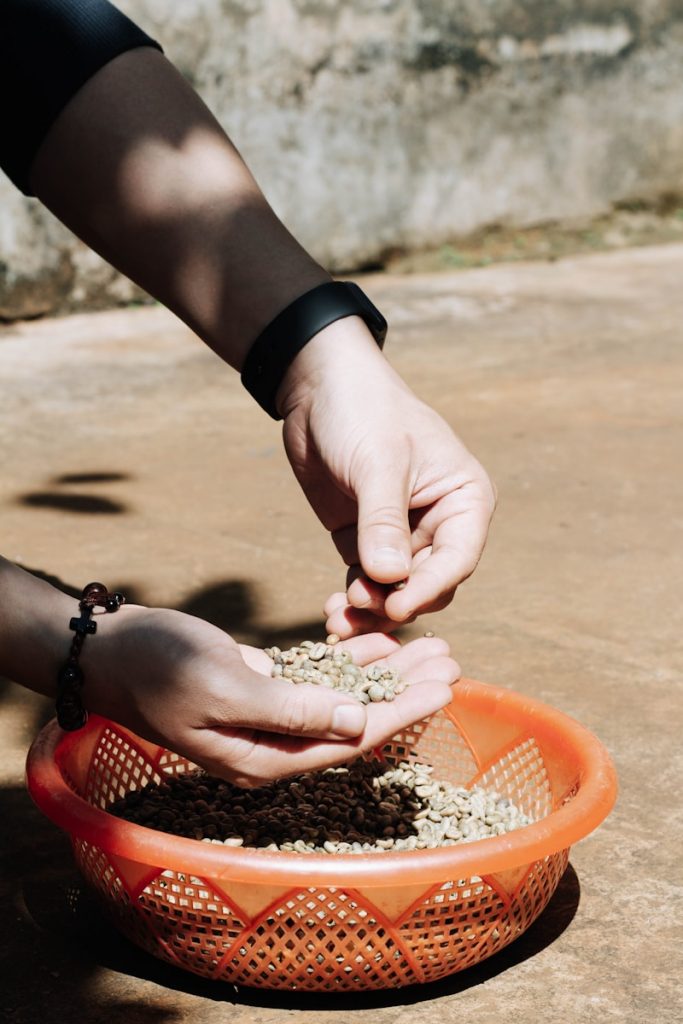An indoor succulent garden is one of the easiest ways to create a modern, low-maintenance plant display at home. Succulents store water in their leaves, so they don’t need constant care — perfect for busy people or anyone new to indoor gardening.
If you want a solid foundation for general plant care first, it’s worth reading Indoor Garden Care: Definitive Guide.
Contents
- 0.1 What Is an Indoor Succulent Garden?
- 0.2 Best Succulents for an Indoor Succulent Garden
- 0.3 How to Make an Indoor Succulent Garden
- 0.4 How to Care for an Indoor Succulent Garden
- 0.5 Troubleshooting Common Indoor Succulent Garden Problems
- 0.6 FAQs About Indoor Succulent Gardens
- 0.7 Final Thoughts on Making an Indoor Succulent Garden
- 0.8 Related Articles
- 1 Learn the Watering Routine That Makes Plant Care Easier
What Is an Indoor Succulent Garden?
An indoor succulent garden is a decorative arrangement of multiple succulents planted together in a container. You can keep it simple with just a few rosettes in a shallow bowl, or create a mini landscape with stones, sand, and driftwood.
Indoor succulent gardens are ideal for:
windowsills and shelves
coffee tables and desks
small apartments or offices
gifts and centrepieces
Because succulents grow slowly and stay compact, they’re perfect for creating a long-lasting, tidy indoor display.
Best Succulents for an Indoor Succulent Garden
Not every succulent thrives indoors, so choosing the right types is important for a healthy indoor succulent garden.
Good choices include:
Echeveria – classic rosettes in many colours
Haworthia – compact, shade-tolerant, great for desks
Sedum – trailing varieties soften the edges of the container
Graptopetalum – pastel rosettes that mix well with Echeveria
Crassula (Jade plant types) – thicker stems for height and structure
Aloe (small varieties) – add spiky contrast
Mixing upright, trailing, and rosette forms gives your indoor succulent garden more depth and interest.
How to Make an Indoor Succulent Garden
1. Choose the Right Container
The container you choose has a big impact on how your indoor succulent garden grows.
Look for:
Drainage holes – essential to prevent soggy roots
Shallow, wide shapes – succulents have shallow roots
Breathable materials like terracotta or unglazed ceramic
Avoid glass containers without drainage unless you’re very confident with watering, as they hold moisture for longer.
2. Use a Fast-Draining Succulent Soil Mix
Succulents hate sitting in wet compost. A fast-draining soil mix is crucial for any indoor succulent garden.
You can buy a ready-made succulent mix or make your own using:
50% standard potting mix
25% perlite or pumice
25% coarse sand or horticultural grit
If you prefer something ready to use, this kind of indoor cactus and succulent potting mix works well indoors.

3. Plan Your Layout Before Planting
Before you start planting, place your succulents on top of the soil and experiment with different arrangements.
Layout tips:
put the tallest succulents towards the back or centre
use medium rosettes around them for structure
add trailing plants near the edges to spill over slightly
leave some space between plants so they can grow
Once you’re happy with the design, gently remove each plant from its pot, loosen the roots slightly, and tuck them into the soil.
4. Add Decorative Stones and Finishing Touches
Top-dressing transforms a simple indoor succulent garden into a finished display and helps keep soil from splashing when you water.
You can use:
small white or black pebbles
decorative gravel
crushed rock or granite
pieces of driftwood or bark
For a clean, modern finish, many people like to top their arrangements with smooth, uniform decorative gravel for indoor succulent gardens around the plants.

5. Place Your Indoor Succulent Garden in the Best Spot
Light is the most important factor for a successful indoor succulent garden.
Ideal conditions:
Bright, indirect light for most of the day
A south- or west-facing windowsill, or a bright shelf nearby
Protection from harsh midday sun through glass, which can scorch leaves
If your home is quite dark, a small LED grow light above the display can help keep succulents compact and colourful.
How to Care for an Indoor Succulent Garden
Watering
Most indoor succulent gardens only need watering every 2–3 weeks. Always let the soil dry out completely before watering again. When you do water, soak the soil thoroughly and allow excess water to drain away.
Light
If succulents begin to stretch or lean, they’re not getting enough light. Move your indoor succulent garden to a brighter spot or supplement with a grow light.
Temperature
Succulents are happiest in typical room temperatures between 18–24°C. Avoid cold drafts and hot radiators.
Fertiliser
A light feed once a month in spring and summer is enough. Use a diluted, low-nitrogen fertiliser designed for succulents or cacti and skip feeding in winter.
According to this RHS guide to succulent care, well-draining soil, bright light, and careful watering are the key ingredients for healthy succulents grown indoors.
Troubleshooting Common Indoor Succulent Garden Problems
Stretched, leggy growth
This is almost always due to low light. Move your indoor succulent garden to a brighter location and rotate the container occasionally for even growth.
Wrinkled or shrivelled leaves
Usually a sign of underwatering. Check that the soil is completely dry, then give a deep soak and let it drain fully.
Mushy, translucent leaves
This points to overwatering or poor drainage. Remove badly damaged plants, let the soil dry out, and reduce watering frequency.
Leaves dropping off easily
Can be caused by sudden changes in temperature, rough handling, or overwatering. Keep conditions stable and handle plants gently when rearranging.
FAQs About Indoor Succulent Gardens
1. How often should I water an indoor succulent garden?
Usually every 2–3 weeks, but only when the soil is completely dry. It’s better to underwater than overwater succulents.
2. Do indoor succulent gardens need drainage holes?
Yes, drainage holes are strongly recommended. Without them, water builds up at the bottom and quickly leads to root rot.
3. Can succulents grow in low light indoors?
They can survive for a while, but they won’t look their best. In low light, succulents stretch and lose their compact shape, so aim for the brightest spot you have or use a small grow light.
4. Do succulents need fertiliser indoors?
A little, but not often. A diluted succulent or cactus fertiliser once a month in spring and summer is plenty.
5. Can I mix different succulents in one indoor garden?
Yes, and it often looks better. Just try to group succulents with similar light and watering needs so they’re easy to care for together.
Final Thoughts on Making an Indoor Succulent Garden
An indoor succulent garden is one of the most rewarding low-maintenance projects you can create. With the right container, gritty soil, and a thoughtful mix of shapes and colours, you can build a long-lasting display that looks great all year. Give your succulents plenty of light, go easy on the water, and they’ll repay you with tidy growth and a clean, modern look in your home.
If you’d like to explore more ways to build creative indoor plant displays, our guide to How to Make an Indoor Cactus Garden is a great next step.
Related Articles
KEEP YOUR INDOOR PLANTS THRIVING
Learn the Watering Routine That Makes Plant Care Easier
Overwatering and underwatering are the most common reasons indoor plants struggle. Discover a simple watering schedule that keeps soil moisture balanced and helps your plants grow stronger with less guesswork.

